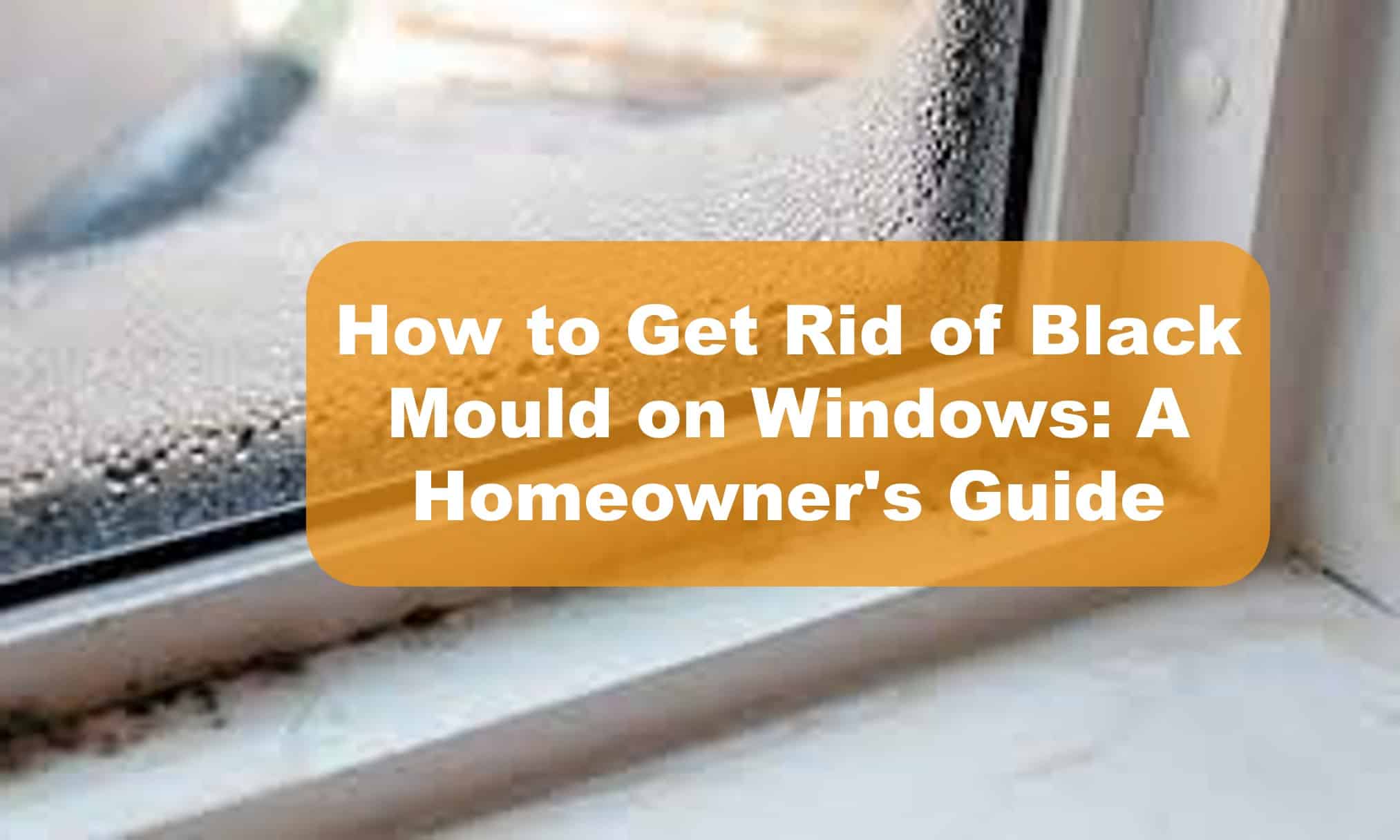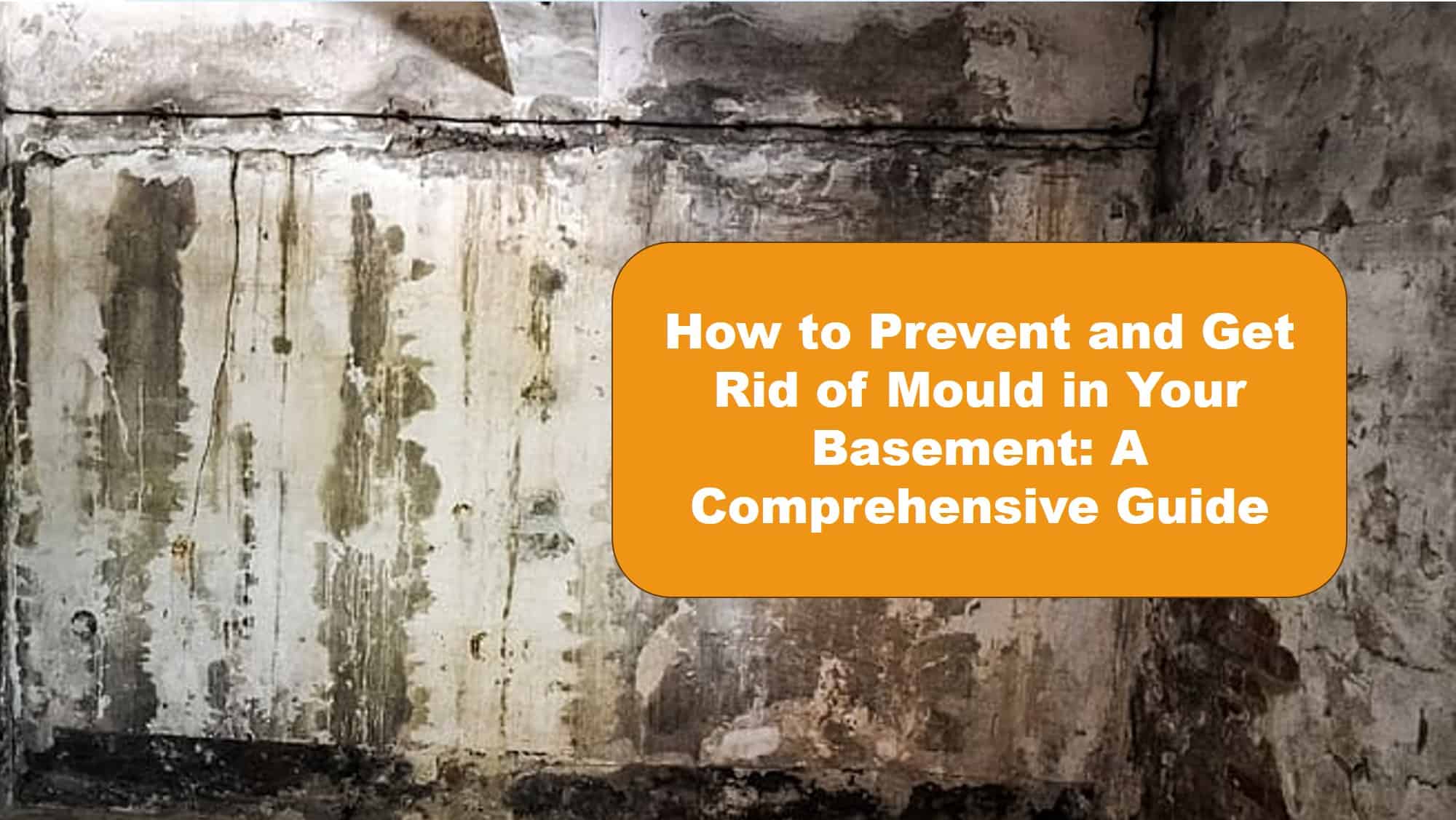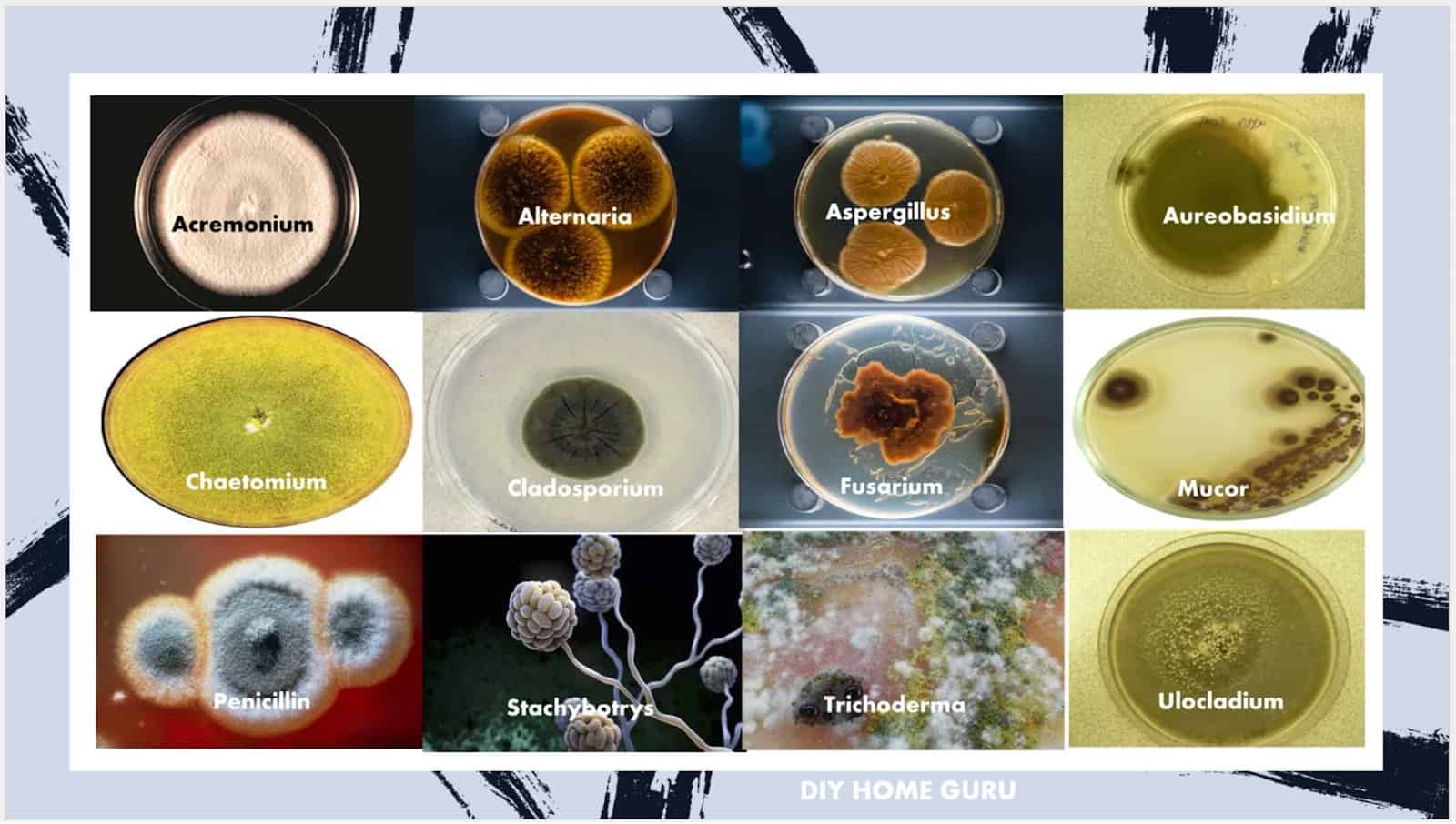Mold growth is a very common, harmless-looking problem in most homes. No matter how clean your house looks there are still mold spores floating around in the air waiting for the perfect conditions to take hold.
Whenever mold makes contact and takes hold of any organic matter it will grow – if the conditions are ideal, that is, food, oxygen, moisture and the perfect temperature.
If left untreated, mold can spread and cause severe health problems.
According to a study done by Berkeley Lab, 22% (that is 4.6 million of the 21.8 million) of asthma sufferers in the U.S. can attribute their illness to dampness and mold exposure in the home.
You may be asking yourself if mold is so bad, how to get rid of black mold?
Yes. You can get rid of mold by interrupting the moisture, oxygen and food triangle needed for its growth. Use Vinegar, peroxide or borax concoctions to kill mold on contact. However, you would need a licenced mold remover to rid of the dead mold from your home as both dead and living mold is harmful to your health.
No hiding it, black mold is unsightly and is a health hazard if not treated. I decided to do some research and create this handy little guide to provide instructions on how to rid your home of excessive mold growth.
Let me share with you the answer to a few typical questions: What is mold? How does it grow and why? What happens to the surfaces mold grows on? How to kill mold?
What is mold?
Mold is a fungus that grows in the form of multicellular strands called hyphae. It grows on any dead organic matter while it consumes it for food.
When the colony is large enough it is called mycelium. You probably hear the permaculture farmers talking about it all the time in living soils.
How does mold grow?
Mold produces small spores that disperse in the wind or float away on water. Its small size allows it to travel long distances by clinging on to anything for transportation.
Mold can lay dormant in extreme conditions and revive when an ideal condition is located – where there is food, water and oxygen.
I will discuss those ideal conditions. If you want to prevent the growth of mold, prevent those ideal conditions from occurring – food, water and oxygen.
Mold attaches itself to a host and feeds from it until the organic matter is fully consumed. The mold secretes digestive enzymes that break down the organic substance into a simpler, easy to absorb substance for food.
Elements that mold needs to grow? And what to do to stop it.
The simple answer is, mold requires water, food, oxygen and the perfect temperature to grow.
Water: Mold loves water – it thrives in humid, wet or damp spaces so if you want to get rid of mold, keep your home dry by eliminating all sources of moisture – fix all leaks and areas where condensation can occur.
Food: Mold consumes any organic matter in your home from drywalls, carpets to dust on the window sill. It is therefore difficult to eliminate all food supplies.
Oxygen: Mold is an organism that requires oxygen to grow. You can slow the growth of mold by limiting its oxygen supply. However, limiting oxygen is almost impossible because it is very difficult to limit oxygen.
Temperature: The optimal temperature for mold to grow is between 77° F and 86° F. Most molds cannot grow below 40° F, therefore, if you want to preserve your food keep it below 39° F.
What can mold grow on?
It is difficult to eliminate the food supply for mold. It consumes the organic material that it lives on. Mold can grow on most surfaces in the home even synthetic materials like adhesives, textiles and paints.
It cannot eat certain inorganic materials like metal, glass or concrete but it can live off the dirt that latches onto these surfaces. The cooler part of the house that is susceptible to moisture is especially vulnerable.
How does mold affect the surfaces it grows on?
Any surface that mold lives on is susceptible to degradation. Remember, mold eats the materials that it lives on.
If you leave mold unchecked it can stain the surface and release unpleasant odors. When one area is destroyed the mold will spread to other areas of the home.
How long does it take for mold to grow?
Mold spores are always floating around in the air and as soon as a surface meet the necessary condition, that is, become damp mold can start growing on it within 24 to 48 hours.
You therefore have a small window of opportunity to take actions and eliminate the source of moisture.
Mold will continue to grow until steps are taken to eliminate the source of moisture, and effectively deal with the mold problem using one of the method explained in this article.
How to get rid of black mold? Naturally
The formulas below can kill black mold. The beauty of this situation is that you may have these ingredients already in your cupboards. Vinegar, baking soda, hydrogen peroxide borax and water. I’ll show you exactly how to mix these ingredients.
1. Use White distilled Vinegar solution?
Mold is killed by acids and strong bases. Vinegar is a mild acid and is one of the safest household cleaning products around that will kill over 80% of mold species.
To clean mold and kill their spores use this simple mixture of white distilled vinegar and water.
Firstly, mix one part of vinegar with one part of water and pour it into a spray bottle.
Second, apply the solution to the moldy area and let it remain there for an hour.
Third, wipe away the solution with a damp cloth and allow the area to dry completely.
Mixing distilled vinegar (acetic acid 5% acidity) and hydrogen peroxide is much more effective but is damaging to the skin and eyes.
If you are going to use the distilled vinegar and hydrogen peroxide mix, make it up fresh and use it immediately.
Contrary to popular belief distilled vinegar and baking soda base does not effective in killing mold. If you add baking soda to the mix it will naturalise the power of the vinegar and form saltwater.
Vinegar with water is especially great at killing mold and lifting hard water stains. However, when you combine baking soda and vinegar, you mix an acid (vinegar) and a base (baking soda) that is only effective in lifting heavy dirt.
Baking soda is a natural deodorizer and a fine abrasive; that’s good for odor absorption and scrubbing.
The mixture creates a fizzy reaction that produces salty water and carbon dioxide gas. It is the agitation of the fizzy that is useful to physically break up and carry away the heavy dirt.
2. Use 3 %Hydrogen peroxide solution
Hydrogen peroxide is an antifungal, antiviral, and anti-bacterial solution that is very effective in getting rid of mold. It is possible that you have some of it already in your medicine cabinets. Hydrogen peroxide is safe to use in your home. This is how I do it:
Pour the 3 percent hydrogen peroxide into a spray bottle. The 3 percent is the standard percentage sold in pharmacies. Spray it onto the moldy surface until the area is completely covered.
Let it sit for about 10 minutes or until the hydrogen peroxide stops bubbling.
Use a rag or soft brush to scrub off the mold and hydrogen peroxide.
Start by scrubbing gently to avoid damaging the surface beneath the mold. Slowly increase the intensity of the scrub, as needed, to agitate and get rid of deep-set mold.
When finished, wipe the surface dry with a clean cloth or rag.
Repeat if necessary.
I’ve used it on various household appliances and different surfaces in the home from countertops and fixtures in the kitchen to bathroom fixtures, fittings and tubs.
Hard flooring and some wall surfaces are no exceptions.
The 3 % hydrogen peroxide mixture can be used to kill black mold. It will kill both the mold spores and their roots. Unlike bleach that only gets to kill the mold spores but not the roots.
NOTE: Hydrogen peroxide is known to react with vinegar, it forms a toxic substance that can irritate your lungs if you inhale it and your eyes and skin if you are in close proximity. (Source PubMed.)
3. Use a borax and water solution
You can use 1 cup borax and 1 cup of water to make a solution to kill black mold. It is a 50:50 ratio. Borax is a natural chemical and it has anti-microbial qualities.
Please note: While the above solutions kill the infestation of the black mold you want to go a step further and remove it from your home.
Both living and dead black molds are harmful to your health. The species that is of great concern is the Stachybotrys variety.
It is a mouthful to pronounce but it is quite dangerous because of the mycotoxins that it releases that can affect your health.
Removing black mold should be done by a licenced professional since they have access to the proper techniques, types of equipment and chemicals to properly and professionally get rid of your black mold problem.
So if you have black mold in your house it needs to be removed, don’t just kill it and forget about it, remove it permanently from your home.
If you want to go ahead and get rid of the black mold use the wet and forget solution for my US readers and I use this other wet and forget solution, while in the UK.
Popular questions on black mold removal
I’ve listed a number of questions below asked by the readers of DIY Home Guru. In order to provide as much help as possible, I will answer each question in specific future articles. The questions are:
- How to get rid of black mold in the shower
- How to get rid of black mold on wood
- How to get rid of black mold on walls
- how to get rid of black mold on windows
- How to get rid of black mold with bleach
- How to get rid of black mold on the ceiling
- How to get rid of black mold on the floor
- How to get rid of black mold on silicone
- How to Prevent and Get Rid of Mold in Your Basement
- how to get rid of black mold on washing machine seal
How does mold harm your health?
Many homeowners asked, is it safe to live in a house with black mold? The best answer is no because black mold can be toxic. It is simply much better to stay away from mold as the toxins it emits can be harmful to your health especially if your immune system is compromised.
The airborne mold spores release volatile organic compounds (VOC) that can interfere with your respiratory and nervous systems.
It is not uncommon for black mold to cause irritation of the mucus membrane in the nose and throat or for you to experience eye irritation.
If you are impacted by the VOCs from mold you may experience sneezing, coughing, headaches, rashes or fatigue. It is just best to avoid black mold if you can to avoid a severe reaction to mold like vomiting, nausea or bleeding nose.
If I am being honest, the best way to get rid of mold is to get an expert. Killing the mold is not enough, you have to remove it – both dead and living black mold is a serious problem.
Conclusion
Do as much as your can to get rid of the conditions that allow mold to thrive. Keep your home free of any excess moisture by opening windows periodically or using a ventilation system.
If you realise that you have a mold problem sort it out promptly before you have a real infestation.
Call in the professional if you need help on removing mold to a high standard to prevent reinfestation after a few months.
Reference
https://www.fema.gov/pdf/rebuild/recover/fema_mold_brochure_english.pdf




